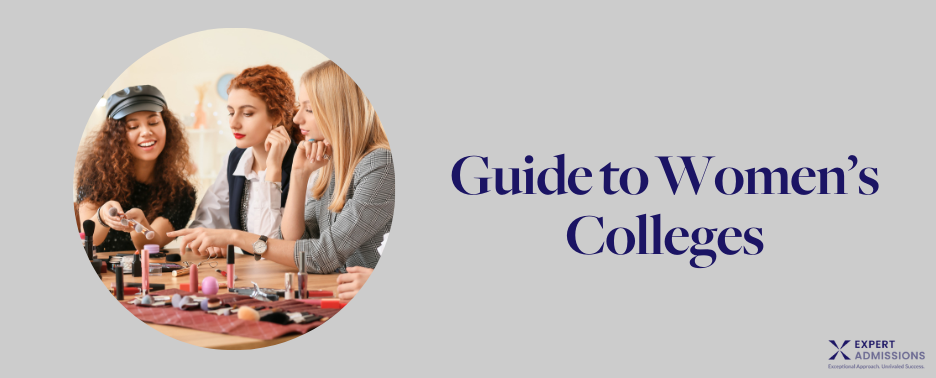
As you’re exploring options for college, you might have realized that several top colleges in the U.S. are actually women’s colleges. If you’re on the fence about applying to a women’s college or don’t know much about them, read on to learn about the benefits and evolution of women’s colleges in the U.S.
History
Women’s colleges are largely a product of the 1800s. Higher education at the time was limited to (mostly wealthy) men. Many women’s colleges in the 19th century were originally founded to train women in propriety, domestic arts, and occasionally teaching, rather than to provide a full academic education. By the mid-to-late-1800s, women’s colleges began to adopt curricula and grant degrees equivalent to those offered at men’s colleges.
In particular, you may have heard of the Seven Sisters — seven liberal arts colleges that were founded as counterparts to the all-male Ivy League colleges and universities. Most of the Seven Sisters — Barnard, Bryn Mawr, Mount Holyoke, Smith, and Wellesley — are still women’s colleges.
Although the number of women’s colleges reached its peak in the 19th century, there are still around 30 women’s colleges in the U.S. These schools are part of the Women’s College Coalition, founded in 1979 to promote the education of women. And if that sounds late to you, remember that it wasn’t until the 1970s or later that the Ivy League schools became co-ed!
Inclusivity
Many women’s colleges have adopted more inclusive gender policies that acknowledge the complexity of gender and reject a gender binary definition. The wording of such policies varies, as you can see from the following statements:
Wellesley “invites applications from all those who live as women and consistently identify as women.”
Bryn Mawr “considers as eligible to apply to the undergraduate college all individuals who have identified and continue to identify as women (including cisgender and trans women), intersex individuals who do not identify as male, individuals assigned female at birth who have not taken medical or legal steps to identify as male, and individuals assigned female at birth who do not identify within the gender binary.”
Benefits
Consortia
Many women’s colleges have consortium agreements with other nearby co-ed colleges. These agreements allow students to take courses and participate in activities at multiple colleges. This means it’s likely that at least some – and perhaps many – of your classes and clubs will be mixed-gender. For instance, students at Barnard and Columbia, Bryn Mawr and Haverford, and Scripps and the other Claremont Colleges all easily participate in class exchanges.
You may be more likely to pursue a math or science major at a women’s college.
As much as we may be reluctant to admit it, men still far outnumber women in STEM fields, even though more women currently attend college than men. At women’s colleges, however, the sciences are highly enrolled majors.
Bryn Mawr has particularly strong STEM programs, with over 50% of students participating in summer research programs. Barnard and Wellesley are also notable for special programs in the sciences. Students can pursue a joint engineering degree from Barnard and Columbia University or a joint BA/BS from Wellesley and MIT. And what’s more, alumnae of women’s colleges are almost twice as likely to complete graduate degrees as those who attended a public university.
You may be more likely to gain leadership experience.
There is still considerable gender disparity among top leadership positions in the U.S. Only about 27% of members of Congress are women, and just over 8% of Fortune 500 CEOs are women.
One of the keys to leveling the playing field is for women to obtain more leadership positions in college. At a women’s college, women hold all of the leadership positions, and career services and advising are focused on women.
Many women’s colleges also offer specific leadership programming, like the Leadership Learning Laboratory at Bryn Mawr and the Executive Education for Women program at Smith. If you’re planning to become a leader in business, technology, education, politics–or any field, really–you may be more likely to get that crucial experience at a women’s college.
Women’s colleges provide strong female role models in numerous academic fields and plenty of opportunities for student leadership. These are great reasons to consider women’s colleges; you might find that there’s one that’s a great fit for you.
Leave a Reply